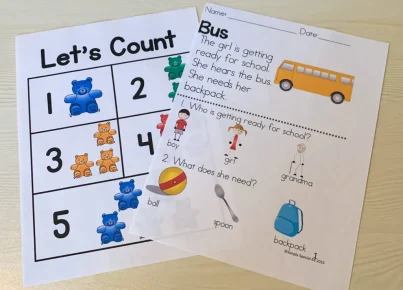Introduction:
Visual impairments can create unique challenges for children and their families. As a society, it is essential that we provide the necessary support to empower these children and ensure they have equal opportunities to learn, grow, and thrive. This article explores various ways to support children with visual impairments and highlights the importance of early intervention and specialized services.
1. Early Intervention:
Early intervention is crucial in helping children with visual impairments develop the critical skills they need to succeed in life. Parents, caregivers, and professionals should work together to identify any issues as early as possible and create a tailored plan that addresses each child’s specific needs. Early intervention services can include specialized training for parents, support groups, and access to dedicated professionals like orientation and mobility specialists or teachers of the visually impaired.
2. Specialized Education Services:
Children with visual impairments may require specialized education services to help them adapt to traditional learning environments. These may include modified classroom materials, such as large-print or braille books, tactile learning tools, and assistive technology devices like magnifiers or screen readers. Teachers should also receive adequate training in working with visually impaired students to ensure they can effectively meet their diverse needs.
3. Social Inclusion:
Promoting social inclusion is vital in supporting the emotional well-being of children with visual impairments. Encourage them to participate in various activities with their peers, such as team sports or extracurricular clubs. This helps build self-esteem, fosters friendships, and develops necessary social skills for long-term success.
4. Independent Living Skills Training:
Teaching children with visual impairments basic independent living skills are crucial in preparing them for a fulfilling life. This can include learning essential everyday tasks like dressing independently, navigating their surroundings safely using a cane or guide dog, and preparing meals using adaptive tools.
5. Emotional Support:
Offering emotional support to children with visual impairments and their families is an essential aspect of a well-rounded support system. Providing a safe space to share feelings, ask questions, and express concerns can be extremely beneficial. Therapists, school counselors, and support groups are all excellent resources for emotional support.
6. Advocacy and Awareness:
Increasing public awareness about visual impairments can help create a more inclusive and supportive community. Advocacy efforts can focus on raising awareness about the importance of accessible spaces, challenging stereotypes, and promoting policies that create equal opportunities for children with visual impairments.
Conclusion:
Supporting children with visual impairments requires a multi-faceted approach that addresses their educational, social, emotional, and independent living needs. Early intervention and the involvement of dedicated professionals are crucial in shaping a child’s life experience. By working together as a community, we can ensure that every child with visual impairments has the opportunity to reach their full potential.





